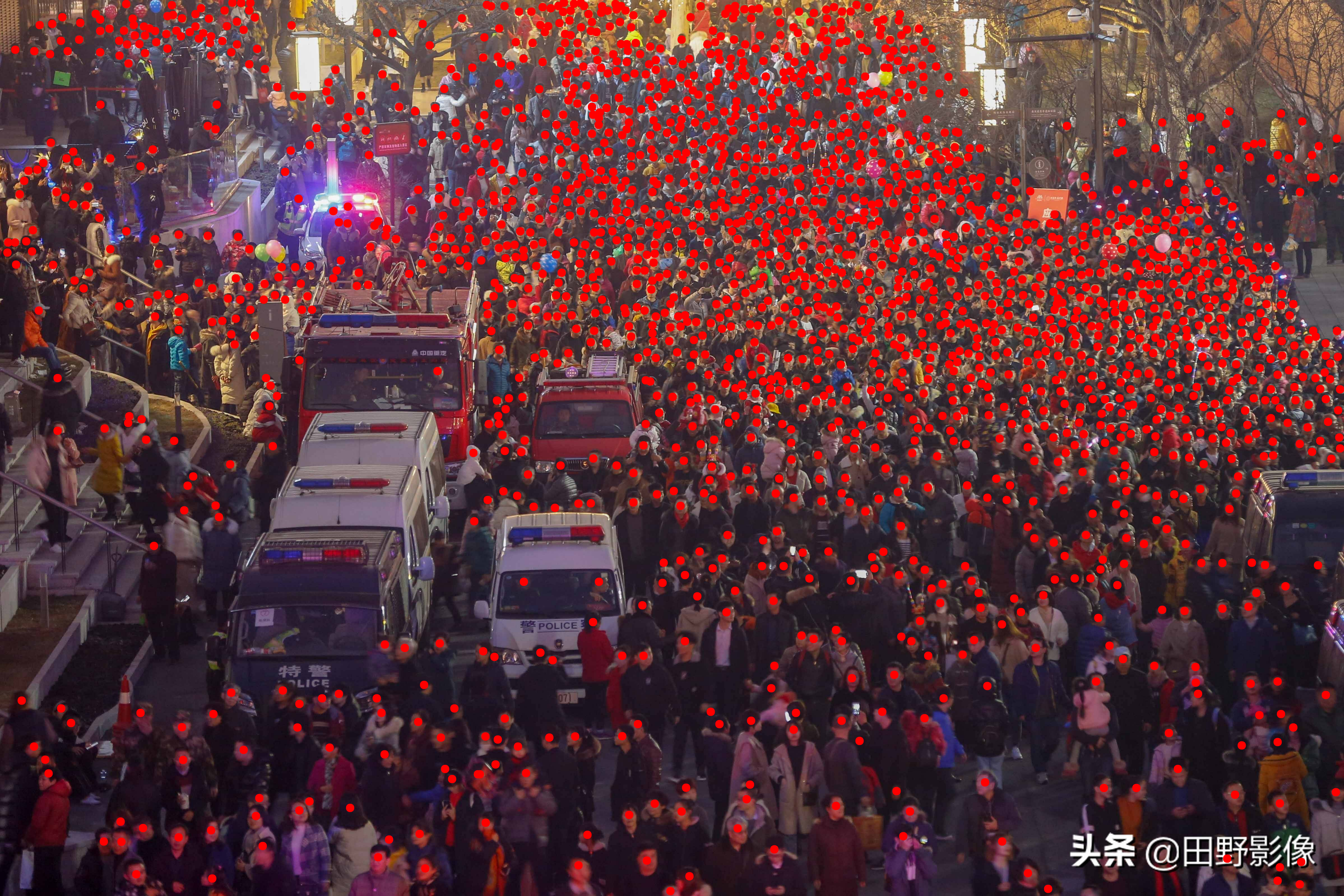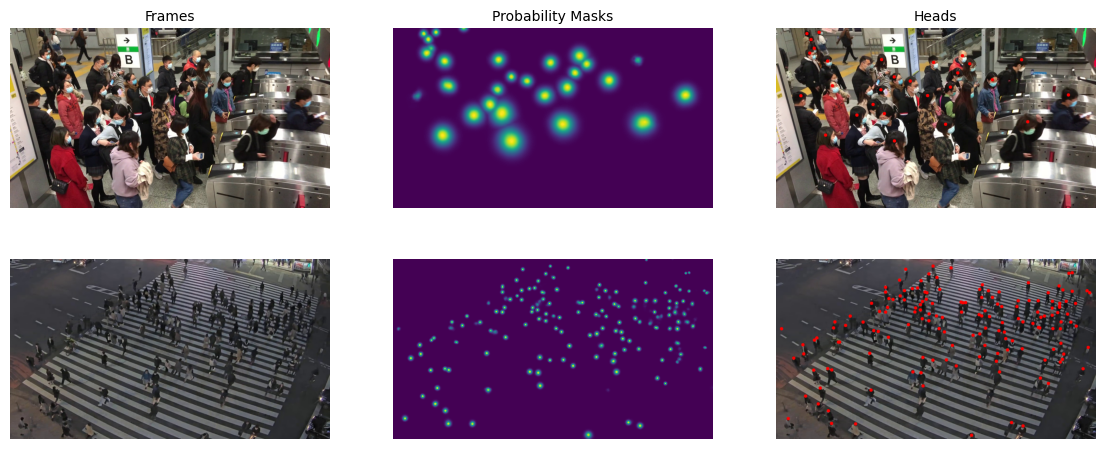Crowd Localization
Head Localization in Large Crowds
Introduction
Understanding crowd dynamics requires precise localization of individuals, even in dense gatherings with heavy occlusions and varying crowd densities, where traditional detection methods often fail. Our model leverages deep learning to generate a probability map of head presence for each pixel. These probability maps are then post-processed using a peak local maxima algorithm to accurately extract individual head positions. The model is designed to deliver robust and scalable head localization in crowded scenes, ensuring reliable performance across diverse environments and supporting applications in public safety, emergency response, and event management.

Key Features
- High Accuracy: Delivers precise localization for improved crowd counting and monitoring.
- Occlusion Handling: Robust to overlapping individuals and partial visibility.
- Scalability: Performs reliably across small gatherings and large-scale events.
- Generalization: Adaptable to diverse environments, from urban streets to stadiums and public events.
- Real-Time Capability: Efficient inference enables integration into live surveillance and monitoring systems.
Technologies Used
- Python: Primary programming language, leveraging libraries such as NumPy and PyTorch for numerical computing and deep learning.
- Deep Learning: Machine learning approach using neural networks to learn complex patterns from data.
- Computer Vision: AI field that enables machines to interpret and understand images and videos.
- Object Localization: The task of pinpointing objects in an image, often used for counting and monitoring purposes.
- CUDA: GPU acceleration platform enabling faster model training and inference.
Use Cases
-
Crowd Counting: Accurately estimate the number of people in dense gatherings, events, or public spaces.
-
Public Safety Monitoring: Detect overcrowding or unusual crowd behavior in real time for security management.
-
Emergency Response: Quickly identify crowded areas during evacuations or disasters to support timely interventions.
-
Event Management: Optimize crowd flow and resource allocation during concerts, festivals, or sports events.

Benefits
- Accurate Crowd Localization
- Real-Time Monitoring
- Robust to Occlusions and Density
- Scalable Across Environments
Integration
The crowd localization model can be integrated into existing surveillance, event management, or urban monitoring systems to provide real-time insights on crowd density and movement. Its outputs can feed directly into dashboards, alert systems, or analytics platforms, enabling data-driven decisions for safety, resource allocation, and operational planning with minimal manual intervention.
Aknowledgements
The development of the model was funded by:
- Starlight - Horizon 2020 Research and Innovation Programme under Grant Agreement No. 101021797
- Appraise - Horizon 2020 Research and Innovation Programme under Grant Agreement No. 101021981